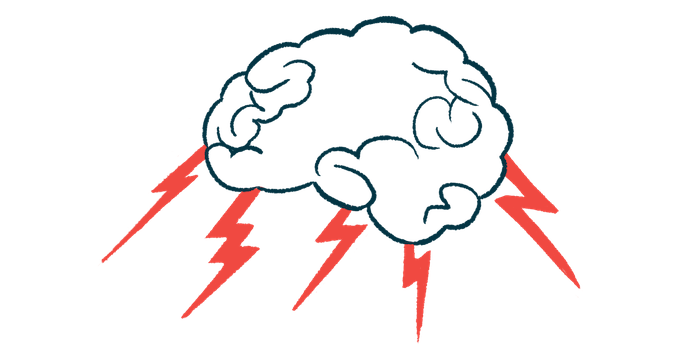Rare-tumor removal helps to resolve Cushing’s, brain damage in woman
Adrenal gland tumor led to unusual symptoms, brain damage, hallucinations

A rare type of tumor caused Cushing’s syndrome with unusual symptoms, including brain damage and hallucinations, in a 72-year-old woman, according to a recent case report.
The disease-causing tumor was removed, and researchers report that the patient is now fully recovered, with partial resolution of the disease-associated brain damage.
The case was described in a report, “Catastrophic ACTH-secreting pheochromocytoma: an uncommon and challenging entity with multifaceted presentation,” published in the journal Endocrinology, Diabetes & Metabolism Case Reports.
Woman, 72, found to have rare type of adrenal gland tumor
Cushing’s syndrome is caused by high levels of the stress hormone cortisol, which is made in the adrenal glands located over the kidneys. Cushing’s disease is a specific form of the syndrome caused by a tumor in the brain’s pituitary gland that produces and releases a signaling molecule called adrenocorticotropic hormone (ACTH). High levels of ACTH trigger the excess production of cortisol by the adrenal glands.
Usually, ACTH-producing tumors are found in the pituitary gland, which normally is responsible for making this signaling molecule. More rarely, however, other types of tumors can start producing and releasing ACTH elsewhere, triggering Cushing’s syndrome.
In this report, scientists in Italy described the case of a 72-year-old woman who was found to have a pheochromocytoma — a rare type of adrenal gland tumor — that produced ACTH, causing Cushing’s syndrome.
The woman was brought to the emergency department due to an extremely elevated blood pressure, despite already being on several blood pressure-lowering medications. She was also experiencing mental disturbances, including confusion, hallucinations, and restlessness.
Six years earlier, at another hospital, a scan had detected a small mass on her left adrenal gland. Testing done at the time had indicated the mass was not causing any obvious health problems, and cortisol levels were within a normal range, so the patient was advised to wait and have it monitored.
Surgery, whenever possible, is usually curative, and anatomic brain damage, as ascertained in our patient, may be at least partially reversible.
Lab tests reveal low potassium and high blood sugar levels
Initial laboratory tests performed in the emergency department showed severe hypokalemia (low potassium levels) and abnormally high blood sugar levels, for which she was given supplemental potassium and an insulin analogue.
The combination of high blood pressure, low potassium levels, and high blood sugar led clinicians to suspect that a hormonal problem might be the underlying cause of her condition.
Further hormone testing revealed she had very high ACTH and cortisol levels, suggesting the presence of Cushing’s syndrome. The researchers noted that the patient did not have any Cushingoid features, such as a rounded face or unusual build-up of fat between the shoulder blades.
During her stay in the hospital, her mental condition worsened, fluctuating between periods of very low energy and extreme restlessness. Eventually, clinicians deemed it necessary to sedate and restrain the patient in order to continue to care for her. She was transferred to a subintensive care unit, and given a feeding tube to provide nutrition.
Imaging of her brain showed an area of damage in the corpus collosum, a region that’s critical for coordinating signals across the brain, and also indicated the presence of a small pituitary tumor (microadenoma). Neurologists said this damage, and her mental symptoms, were likely the result of profound hormonal disturbances, since hormones like cortisol have powerful effects on brain health, mood, and behavior.
In further whole-body imaging scans, the researchers used a chemical tracer that can highlight neuroendocrine (hormone-producing) tumors. This type of imaging strongly highlighted the previously-identified growth on the woman’s adrenal gland, but no other hormone-producing tumors.
Based on this finding, “an ACTH-secreting pheochromocytoma was suspected and the pituitary microadenoma was deemed a likely incidental finding.”
Patient undergoes treatment and surgery for Cushing’s
The patient was started on treatment with ketoconazole, an anti-fungal medication sold under the brand name Nizoral, among others, that can be used to lower cortisol levels in people with Cushing’s.
Surgery to remove the adrenal tumor was considered high-risk, but the patient’s family elected to pursue surgery, and so the patient underwent a laparoscopic left adrenalectomy to have her left adrenal gland removed. Laboratory analyses of the tumor confirmed it was an ACTH-secreting pheochromocytoma.
During surgery and in the months following, she remained on cortisol replacement therapy to keep hormone levels within a normal range.
Within a week after surgery, her ACTH and cortisol were within a normal range. Her clinical condition slowly improved, the feeding tube was removed, and by the time she was discharged from the hospital, her blood pressure, blood sugar, and potassium levels were all within normal ranges. Further brain imaging also suggested that the previously-noted area of damage had healed somewhat.
Over the months that followed, the patient fully recovered. As of the latest follow-up, more than a year after surgery, she is still taking a low dose (12.5 mg/day) of cortisone to help maintain cortisol levels in a normal range.
“Surgery, whenever possible, is usually curative, and anatomic brain damage, as ascertained in our patient, may be at least partially reversible,” the researchers wrote.








